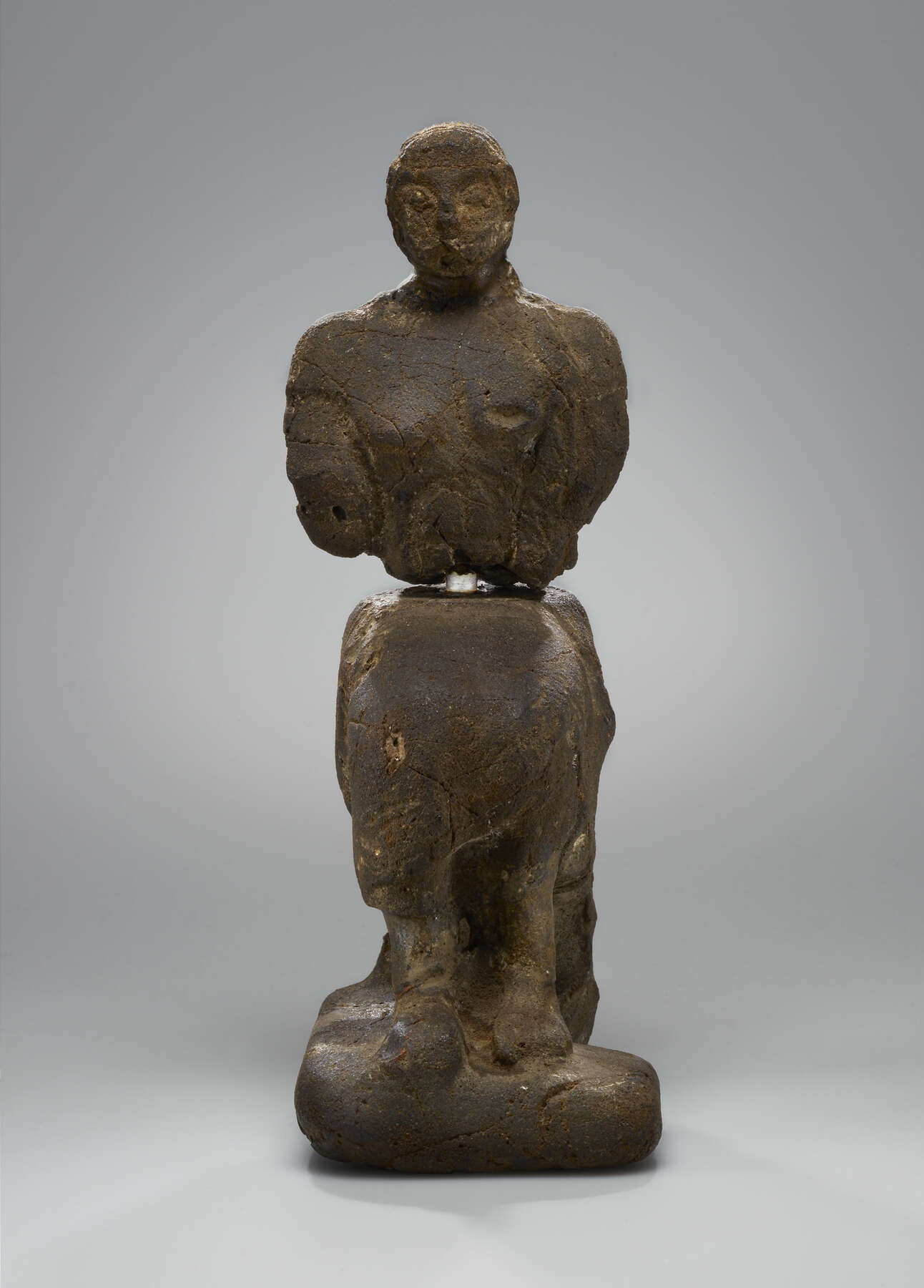Seated Divinity
57. Statuette: Seated Divinity
| Accession Number | 82.AO.51 |
| Date | Modern |
| Dimensions | Height: 280 mm; width of base: 135 mm; Weight: 434 g |
Provenance
–1982, Vasek Polak, 1914–97 (Hermosa Beach, CA), donated to the J. Paul Getty Museum, 1982.
Published
A. M. Shedrinsky, D. A. Grimaldi, J. J. Boon, and N. S. Baer, “Application of Pyrolysis Gas Chromatography and Pyrolysis Gas Chromatography/Mass Spectrometry to the Unmasking of Amber Forgeries,” Journal of Analytical and Applied Pyrolysis 25 (1993): 77–95.
Discussion
After a preliminary assessment that this amber sculpture was a genuine pre-Roman work, further study of the sculpture and a chemical analysis of the amber showed it to be a modern object.1 Stylistic similarities with the work of the forger who made the so-called Apollo of Fiumicino and an amber kouros, both once in the Grüneisen Collection, suggest that it is a work by the same hand.2
Notes
- For the chemical analysis, see A. M. Shedrinsky et al. (above, this cat. entry). ↩
- W. de Grüneisen, Art Classique: Sculpture grecque, romaine, étrusque, exh. cat. (Paris, 1925), pp. 1–3, pl. 1; and W. de Grüneisen, Tableaux et esquisses de l’histoire de l’art: Apollon d’ambre trouvé à Fiumicino (Paris, 1924). C. Albizzatti, “Analecta Gruenesiana,” Historia [Milan], n.s., 1 (1927): 39–41, fig. 9, published the “Apollon” as a fake. I owe these references to R. D. De Puma (pers. comm., 1999). ↩
